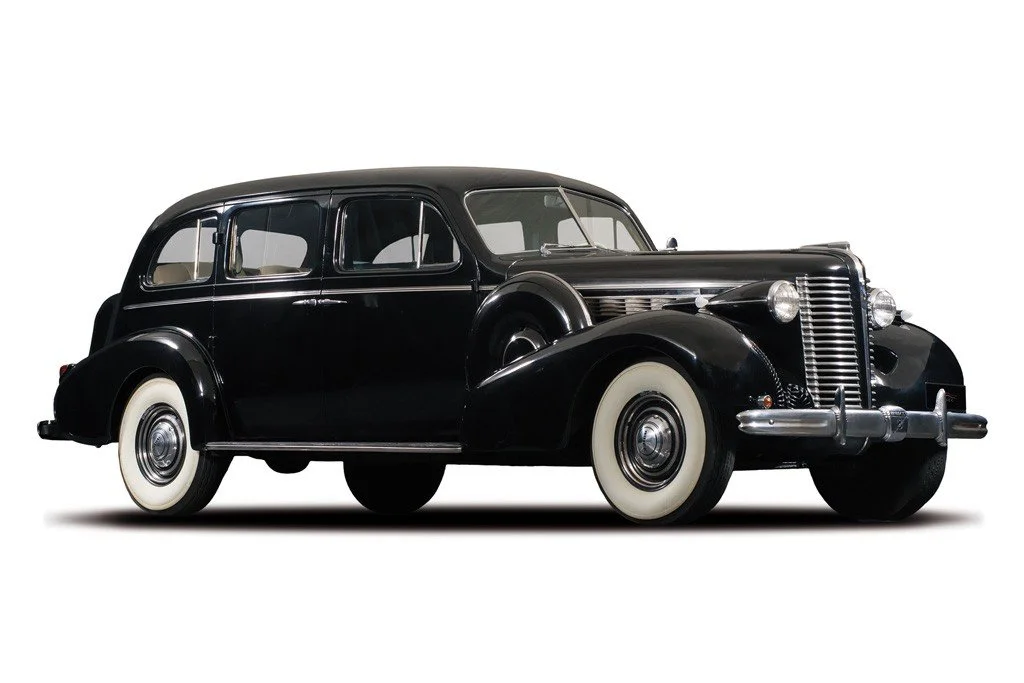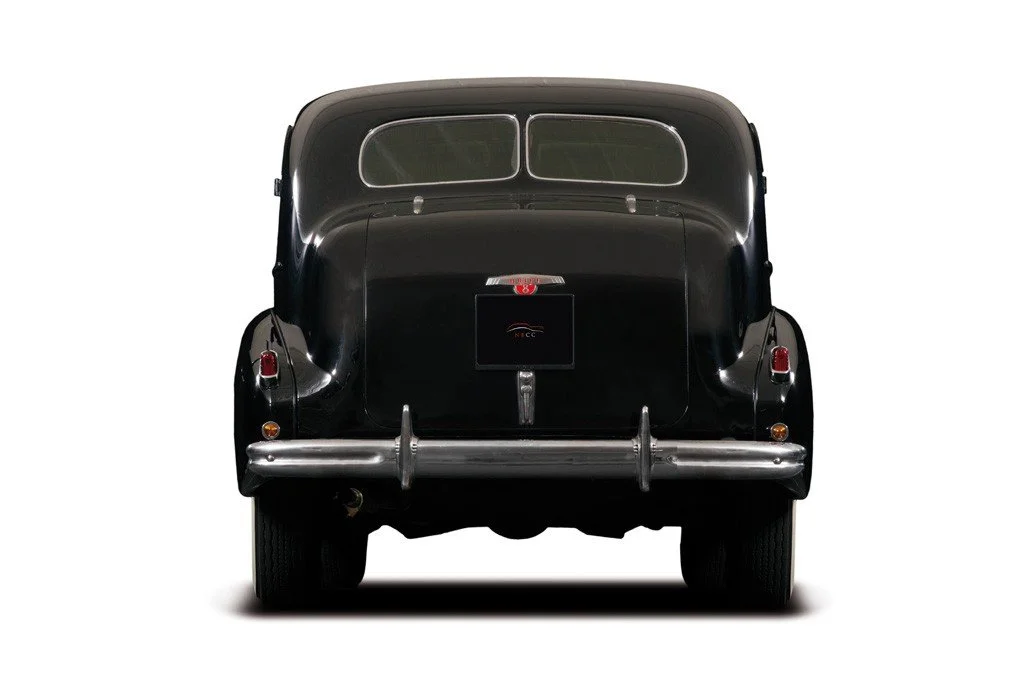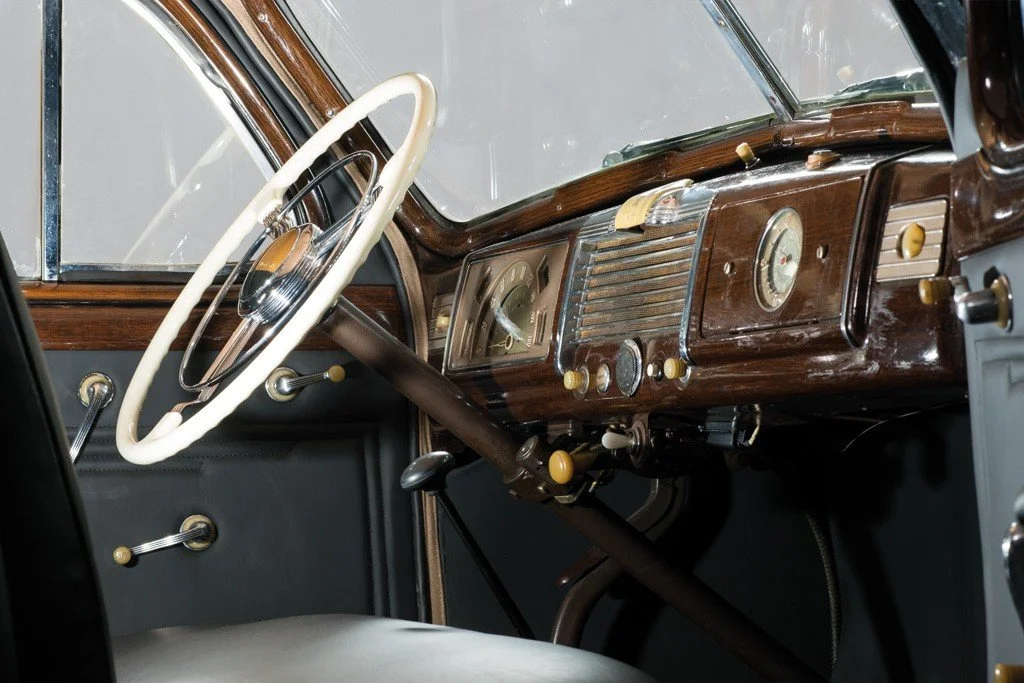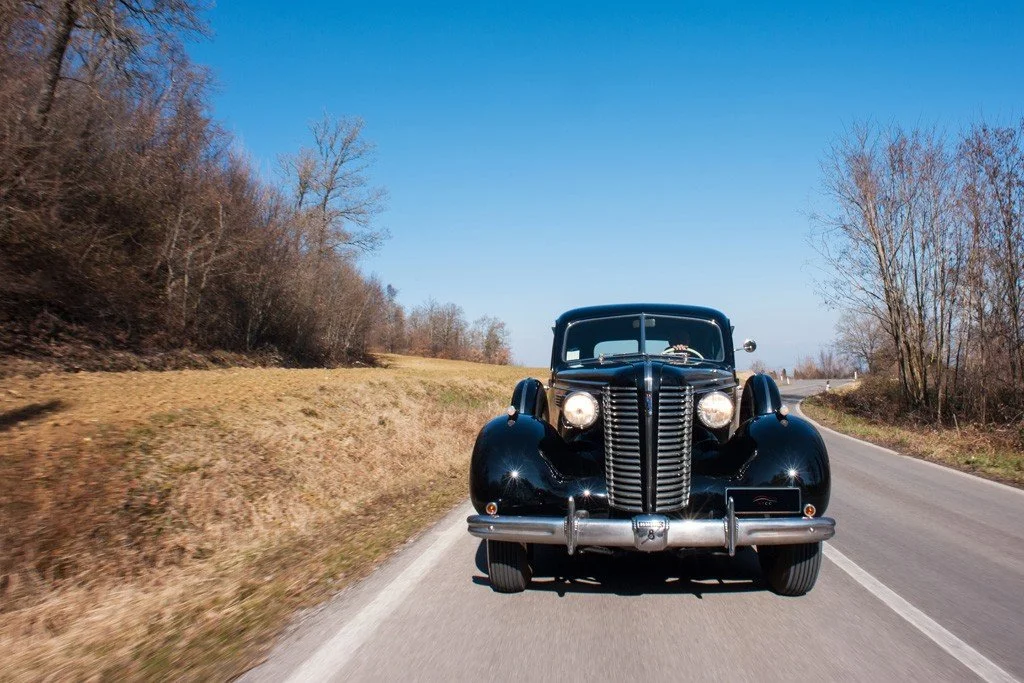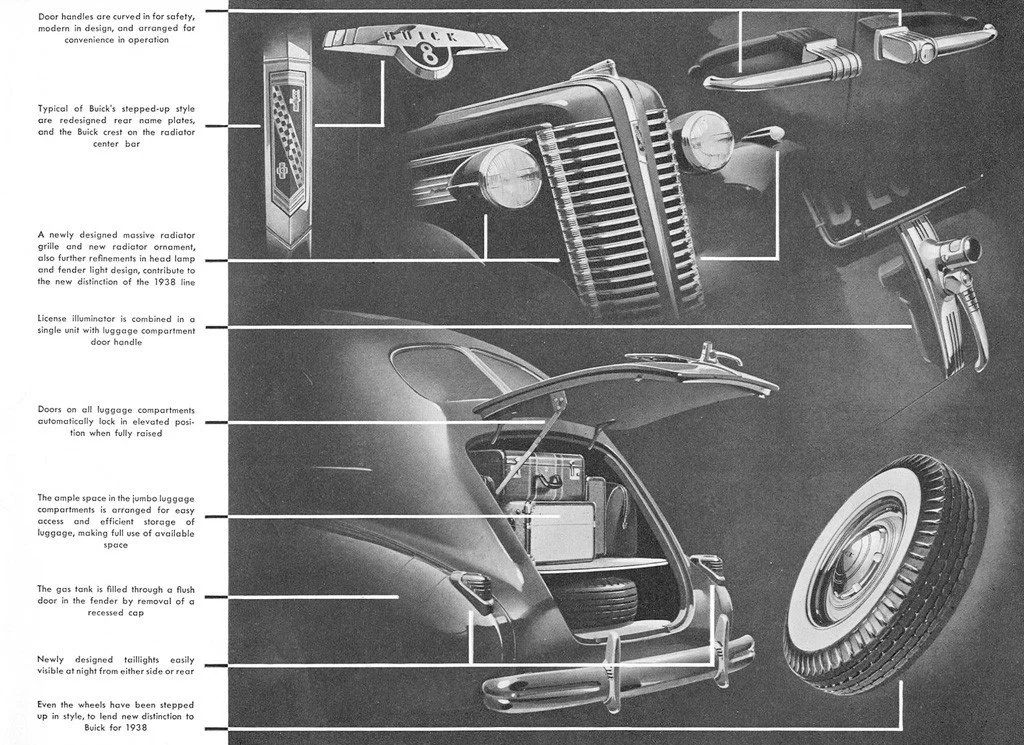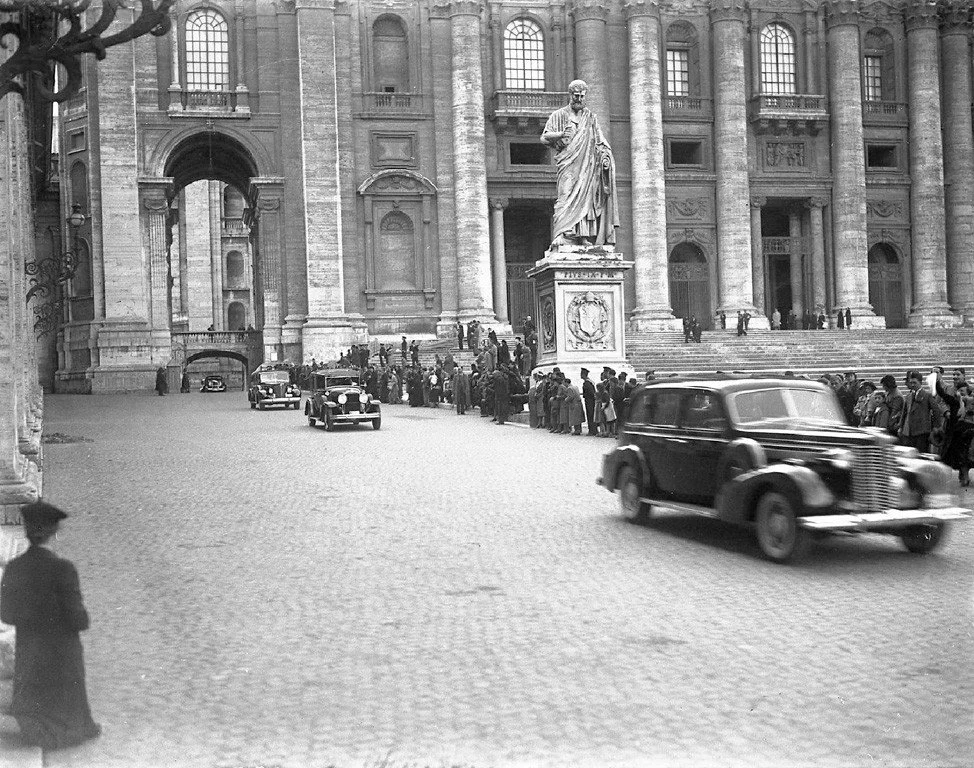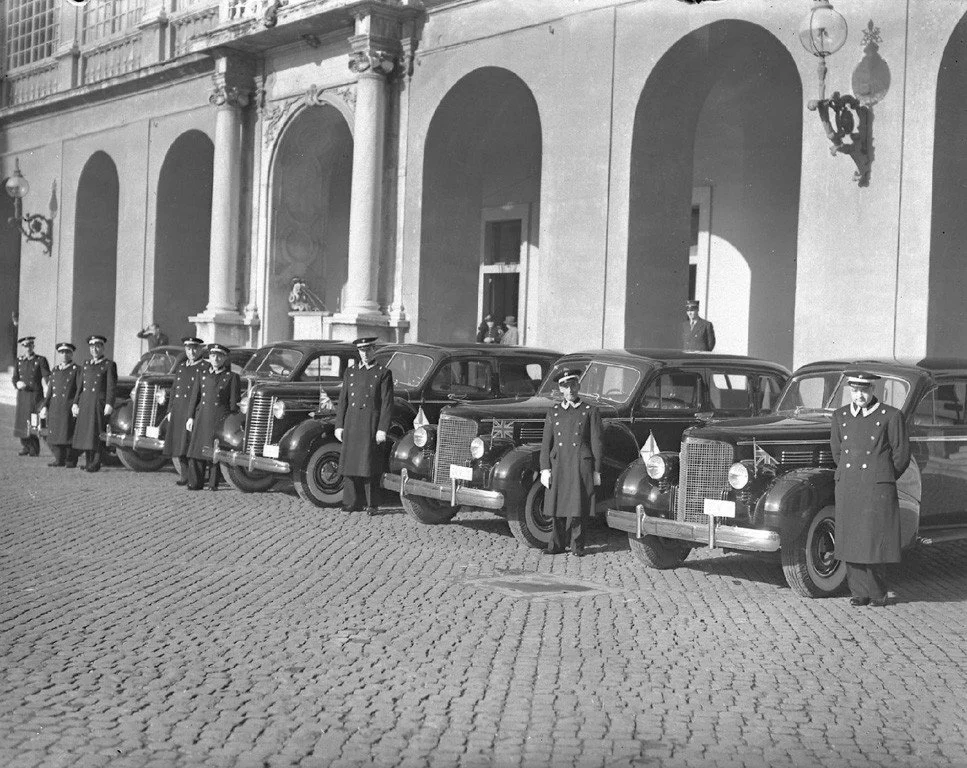-
In the Nicola Bulgari Collection, this car is called “the twin”, as it partners the other Buick Limited Series 90 Limousine that belonged to the Vatican and joined the collection many years later, in 2012. While the car bought in 1966 had the original Vatican license plate SCV15, this one had the consecutive number SCV16.
The car was found in a curious manner, spotted while watching an Italian film on TV called “Suor Pascalina” set in the era when it was in use in the Vatican. After some research it was discovered that the Buick had been rented for the film from Cartocci in Rome, an agency specializing in this type of service. Once the car had been tracked down, and after a long negotiation, in 2012 it was purchased by the Nicola Bulgari Collection.
The renovation of the engine was carried out in Italy, together with other components such as the carburetor, brakes, water and gas pump, radiator, fuel tank and distributor. The interior upholstery was renovated by Autoselleria Massenzi in Rome, where the steering wheel was replaced, whereas the original chrome and dash were preserved. As well as the rarity of the Limited Series 90 Limousine of 1938 (only 410 built), this Buick, bought new by the Vatican, has a priceless historic value... and today it once again resides proudly beside its “twin”. -
Company
General MotorsWheelbase
140inInterior trim
Dark Gray leather/Beige clothBrakes
front and rear drumsMake
BuickLength
219.5inEngine
inline 8 - 320.2cidTires
7.50x16Model
Limited - Series 90LWidth
79inCarburetor
1 carb. Stromberg AAV-2Original Price
$2,453Body style
4-door LimousineWeight
4653lbsHorsepower
141hp @ 3600rpmProduction
410Model year
1938Exterior paint
BlackTransmission
3-speed manual -
For 1938, the front end styling on Buicks changed slightly. The front line of the grille was now nearly vertical, which allowed for a longer hood. The graceful form of the headlights was mirrored in the shape of the fender-mounted parking lights. The Series 90 came with a 320 cubic-inch overhead valve straight eight.
The Series 90 - Buick's largest and most luxurious vehicle - was named the Limited. The most costly Buicks in production, 'Limited' indicated that these models featured a high level of trim along with standard options. The line was produced between 1936 and 1942 and consisted entirely of touring sedans and limousines. 410 Series 90 Limited Limousines were built in 1938. They featured a vertical grille, a slightly longer hood, taller front bumper guards and more stylish front fender running lights than the previous models. 1938 was the last year Buick utilized wood in the body for the Roadmaster and Limited Series.
Inside, one would find 'commodious luxury and magnificent appointments' all contained within 'the safety of the Unisteel Turret Top Body by Fisher'. Cushioned seats, high-quality carpet, and an automatic dome light of iridescent glass contributed to the ambience of the Limited Limousine. With a luxurious interior and a smooth ride, one could arrive in style and comfort in a Buick Limited Limousine, while one's chauffeur 'enjoyed the handling ease characteristic of smaller motorcars.
Considered to be technically superior to their predecessors, these sleek models offered luxurious features that were incomparable on other vehicles.
All-steel passenger compartment tops that were fashioned from GM's Turret Top design, improved hydraulic safety-braking system, adapted engine cooling system, improved front suspension and alloy engine pistons.
The wheelbase was stretched to 140' in 1938, and the wooden structural members were replaced with steel. This made the Limited and the Roadmaster the last Buick passenger cars that would rely on wood components.
Cadillac executives were clamoring behind the scenes to remove the Limited from the market as it was infringing on their production. The Limited was priced at the nearly the same amount as the Imperial Sedan (limousine) produced by Cadillac. The Limited's four-door hardtop sedan began at a base price of $5,112, which was $221 higher than Cadillac's extended deck Series Sixty-two four-door hardtop sedan.
The Limited continued to be produced until the beginning of World War II. Following the War, the Limited nameplate was dropped along with the extended wheelbase models. -
Until 1929 the Vatican had no cars at all, relying on traditional horse-drawn carriages. It was only when it was established as a State that it acquired its first automobile, a Graham-Paige. That car remains in the Vatican museum to this day, but the other pre-war limousines that were used for VIP transport – Buicks, Cadillacs and Packards – were disposed of and eventually acquired by The NB Center.
The history of the Vatican limousines is astonishing. The NB Center’s archive includes photographs of several of them – brand new and still unregistered – being blessed by Pope Pius XI in 1938, of the Cadillacs with Pius XII and John XXIII, and of the cars’ use by notable figures including royalty, heads of state and high-ranking diplomats.
Some of these ex-Vatican cars were found in excellent condition; they were not much used, so their engines were near-perfect. Others fared less well; a Cadillac sold off in the early 1960s ended up in the 1970 movie ‘Patton’ and was in poor shape. One of the Packards was also used in movies and had acquired a different engine and transmission, leaving it with two shift levers. Nevertheless the underlying build quality of the cars is very evident; in some cases the chrome brightwork merely needed polishing.
The skilled and committed NB Center teams in Rome have learned a great deal from their colleagues in Allentown, and the repair and restoration of the Vatican cars were all managed entirely in-house by the mechanical staff led by Sergio Caudai and by the skilled bodyshop team of Carrozzeria A. Rizza.
The limousines have all received sensitive restoration, maintaining as much of their precious originality as possible. These exceptional and historic vehicles should stay in Rome, of course, but The NB Center intends to create a special place for them in the city, separate from the rest of the collection, where their intriguing story may be presented in all its fascinating detail.

